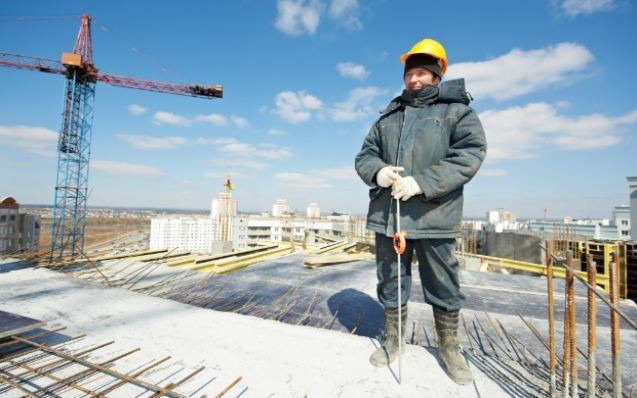Construction Worker Safety in Extreme Cold
Posted on 23rd November, 2022

Most would agree that construction work is an essential job. In fact, despite a recent pandemic, construction work continued in our area. Yes, the well-known housing crisis meant that the building had to continue.
Unfortunately, although construction is one of the most important professions, it is also one of the most dangerous. Workers on a job site are surrounded by heavy equipment while the site itself can be littered with hazards. Some of the most common types of injuries on a job site, known as the "fatal four," are as follows:
- falls
- electrocution
- being struck/caught by heavy machinery
- being hit by an object
The fact that these types of injuries are called the "fatal four" lends to the reality that they are often life-threatening. Cold is an additional physical hazard in many construction workplaces. The cold may result from outdoor conditions or be created artificially, as in refrigerated environments. Extended long periods of working in the cold can result in cold stress.
What is Cold Stress?
Cold stress occurs when the internal body temperature (core temperature) is driven too far down, creating severe health concerns that can be fatal. Even lesser degrees of cold stress can result in the loss of mental clarity; on a job site: poor choices can be deadly.
Granted, in the Sacramento region, we don't suffer from crazy snow storms. Yet, the near-freezing temperatures we get at times are still considered "extreme cold."
Weather reports often relay to us the temperature outside as well as the temperature it "feels like." The difference between these two numbers is due to wind chill, and cold weather with increased winds means heat will leave your body more rapidly.
Working in an "extreme cold" environment is physically draining because a person's body is forced to work harder to maintain its core temperature.
What Can Contribute to Cold Stress?
- Improper Clothing
- Damp Clothing
- Exhaustion
- Predisposed Health Conditions
- Poor Physical Fitness
What Can Be Done?
Most job sites adhere to OSHA regulations for safety, but OSHA doesn't set specific rules or standards for cold environments. Therefore, employers have a responsibility to create a working environment that is safe and free from hazards, which include cold stress. Some examples of steps they may take could include:
- Training their workers on how to recognize cold stress.
- Provide equipment, such as radiant heaters that can warm workers whose jobs are outdoors.
- Encourage safe work practices that could include: working in pairs, taking needed breaks, and giving time for new employees to become acclimated to working in colder environments.
- Implement safety measures tailored to the workplace and review these frequently with employees.
- Make it mandatory that all employees are appropriately dressed, even considering the type of fabric worn by all employees who work in cold environments for extended periods.
When Injured on a Construction Site
No one wants to be injured, but it is always good to review the critical steps to take if ever you are:
- Assess your injuries. Although your instinct might be to jump up and shake it off - take a moment to assess how you feel. If you feel head pain, neck pain, or back pain - don't move but seek medical attention. Even if your injuries are non-life-threatening, it would be wise to seek medical attention.
- Gather proof. Take photos of the injuries and the cause of your injuries. If possible, take down the information of any witnesses.
- Report your injury to your employer. Try to make a statement of the events that is straightforward and clear.
- Call an attorney. A construction accident attorney will ensure you know your rights and take action to protect these.
